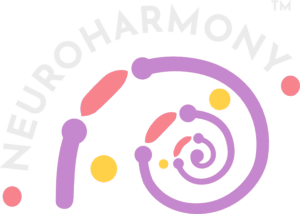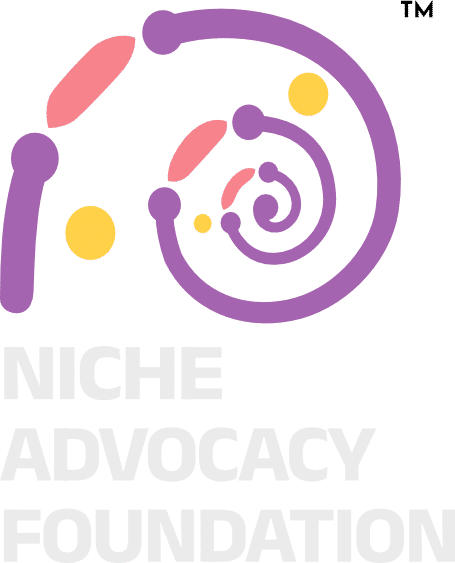
Conference & Workshop
A Multidisciplinary Approach in Neuro-Rehabilitation and Neuro-Palliative Care
February 16-18, 2024 Swami Vivekananda Hall, MIT WPU, Kothrud, Pune
Jointly Organized by


Know the topics
- Parkinson’s disease
- Dementia
- Brain stroke
- Head Injury
- Learning Disabilities
- Multiple Sclerosis
- Back Pain
- Neuropathy
- Neuro-Rehabilitation
- Neuro-Palliation
- End of Life Care and Advanced care directives
- Living Wills
Parkinson’s disease:
Your daily routine for the morning includes brushing your teeth, making coffee, getting dressed. Imagine now that those easy chores are becoming difficult. The onset of tremors, stiffness, and slowness makes routine activities seem like a dance with an uncoordinated partner. That’s how Parkinson’s illness really is.
Parkison’s disease stands as the second most prevalent neurological disorder. Common symptoms include slowness of movement, muscle rigidity and tremors while resting, psychological conditions like depression and anxiety, cognitive impairments, sleep disorders, loss of smell, bladder and gastrointestinal malfunction and cardiovascular issues.
Risk factors being age, exposure to pesticides and toxic fumes, traumatic brain injuries, etc. Most commonly, it is credited to a convergence of environmental and genetic variables. There is no known cure for complete recovery from this disease.
The treatment for this disease includes consulting various professionals like neurologists(for diagnosis and medication), physical therapists(for motor issues), speech therapists(for difficulty swallowing and for production of speech), occupational therapists(for impairment in everyday life activities), dietitians(for advice on a proper, balanced diet), psychologists(for mental health improvement) and a social worker for support to family and friends.
Dementia
Consider the library-like quality of your own thoughts. Imagine now that certain books are moving and disappearing from sight. That is dementia’s basic nature; it is a brain disease that impairs thinking, memory, and behavior.
It’s more than just misplacing your keys, although that does happen occasionally. It feels as though your identity, special occasions, and even well-known people are going dark.
Dementia is an umbrella term used to describe a group of symptoms associated with cognitive impairment in thinking, memory, and our functionality to carry out daily tasks. Although it is frequently linked to age, it is not a typical aspect of aging. It is a neurological condition.
Completely influenced are our cognitive abilities like thinking, memory, direction, decision making, learning ability, language, and judgment. The most prevalent kind of dementia is thought to be Alzheimer’s. It is responsible for 60–70% of dementia cases. Frontotemporal dementia, Lewy body dementia, and vascular dementia are among more forms of dementia.
A variety of clinical evaluations, cognitive tests, and brain imaging methods and tools are used in the diagnosing process. Most dementias have no known cure, although early intervention can help patients manage illness more skillfully, enhance their quality of life, and support their career.
Brain stroke
Consider your mind to be a city. Transporting essential resources (nutrients and oxygen) to every corner are the cars (blood), and they begin to speed along highways (arteries). But what happens if a large highway is blocked by a blood clot or traffic jam? What if a neighborhood is flooded by a ruptured pipe that leaks blood vessels? During a stroke, that is what occurs. Your voice, your body, and even your life may become uncontrollable when brain cells begin to die in the absence of blood. Your brain’s version of heart attack is Brain Stroke.
Brain stroke is a medical emergency that occurs when blood flow to a portion of the brain is interrupted. Common symptoms include paralysis or weakness on one side, speech difficulties or loss of speech skills (aphasia), speaking incoherently or slurred (dysarthria), weakness in one side of your face’s muscle control, sudden loss of vision, hearing, taste, smell, or touch, either completely or partially, double or fuzzy vision, or diplopia, loss of motor skills or incoordination (ataxia), vertigo or dizziness, vomiting and uneasy feeling, stiff neck, personality shifts and emotional instability, confusion or frenziedness, fits, Amnesia, or loss of memory, headaches (typically intense and abrupt), unconsciousness or fainting.
Noticed these symptoms? Well, with Neurological diagnosis and examination, a healthcare provider can easily diagnose a stroke. Using CT scans, blood tests, MRI scans, ECG and EEG, a healthcare provider suspects a stroke.
Who’s at risk? Patients of hypertension (High Blood Pressure), diabetes, High Cholesterol; The risk of stroke increases with age, and men have a slightly higher risk than women; consumption of alcohol and smoking just doubles the risk of a brain stroke!
From children to adults, everyone can have a stroke, although certain
people are more susceptible than others. Later in life, strokes are more common (those over 65 account for around two thirds of all stroke cases).
Head Injury
Any head trauma, from non-penetrating injuries like vehicle accidents to penetrating ones like gunshot wounds, can result in head injuries . While many people recover from severe head injuries in a matter of days, they can cause lifelong harm or even death. Head Injury symptoms might vary according to the extent of the damage, although losing consciousness following a hit is a crucial indicator. A mild head injury can cause a variety of symptoms, most of which appear hours or days after the head impact. Behavior changes, disorientation, seizures, dilated pupils, impaired vision, headaches, nausea, vomiting, agitation, sensitivity to light and scent, sleep difficulties, and slurred speech are all indicators of a head injury. Children and infants may also cry, be uneasy, and refuse to eat, drink, or be breastfed. Minimal intervention is needed for mild to moderate head injuries, such as counseling, surgery, and rehabilitation. More intensive therapies and inpatient care may be necessary for severe Head Injuries. Depending on the type of head injuries and the extent of the injury, different rest times may be required. While more serious injuries could take longer to heal, minor injuries might make it harder to resume activities. The goals of treatment are to reduce symptoms and enhance quality of life; certain effects get better with time.
Learning Disabilities
Learning disabilities (LDs) affect the brain’s interpretation and use of knowledge, affecting the acquisition, organization, storage, recognition, and utilization of nonverbal and verbal information. These disabilities can be minor or severe, affecting writing, reading, and math performance.Learning disabilities (LDs) are distinct from intellectual disabilities as they don’t affect IQ but present unique learning challenges. LDs are typically learned early, but some are diagnosed in their teens or early 20s. A child with learning impairments has a discrepancy between their academic potential and performance. Difficulties in reading (Dyslexia), counting, rhyming, expanding one’s vocabulary, solving problems, and recognizing letters, understanding numbers and mathematical concepts (Dyscalculia) are indications of a learning disability.
Individuals with learning disabilities require varying levels of help, often requiring a multidisciplinary team comprising educators, remediation specialists, psychologists, special education services, and medical professionals.
Multiple Sclerosis
Multiple Sclerosis or MS is a chronic disease that occurs when the central nervous system attacks the nervous system. It is caused when the immune system mistakenly attacks the myelin sheaths that protects the nerve fibers which can cause problems with body and brain connection.The reasons or diagnosis for MS is still unknown but some factors and research shows genetic factors for it.
What do the symptoms look like? The symptoms include inflammation, muscle weakness(spasms and fatigue),movement problems(balance, coordination, difficulty in walking),vision impairment(blurred vision & double vision), cognitive function, numbness and pain.
What is the treatment? There is no cure for Multiple Sclerosis currently but the treatment helps to manage symptoms, slow disease progression and can improve quality of life through medications(steroids) and rehabilitation(physical therapy) and disease modifying therapies(DMT’s).Living with MS can be difficult but surely is manageable through interdisciplinary efforts and various therapies which helps in increasing the span of life.
Back Pain
Have you ever had an unwanted visitor stay for a bit too long? It’s not a nosy neighbor or a bugging salesperson—back pain is the unexpected ache that may make your everyday activities feel like a tightrope walk.
Symptoms for this unwanted guest can range from pain in a specific area of the back, radiate to other parts of the body, such as the legs (sciatica), involuntary muscle contractions, and stiffness.
But fortunately, most back pain episodes can be avoided or relieved with some precautions, especially for those under 60. In the case that prevention is unsuccessful, a few weeks of basic home therapy and frequent, proper body usage will heal the back. Back Pain seldom requires surgery to be treated.
Anyone can develop back pain. Age plays a risk factor to it, limited muscle movements and exercise, excess body weight, psychological conditions like stress, and smoking could lead to back pain.
But when to see a doctor?
When the pain lasts for too long and is severe and radiating. Noticed sudden weight loss? Seeing a doctor would definitely help. Rarely, back pain may indicate a major health issue. Seek back pain treatment immediately if you notice… Loss of bladder or bowel control. Fever accompanied with back pain. Or, if the back pain is the result of a traumatic injury, such as a fall or a car accident.
Neuropathy
Imagine yourself continually feeling as though your feet are asleep, even though they are awake, while you walk on a bed of pins and needles. That’s only a small sampling of what living with neuropathy might entail.
Well, a generic term for a disorder affecting the nerves that results in paralysis, numbness, and frequently terrible pain is neuropathy, also referred to as nerve damage. It feels like a cross between your nerves, delivering your brain mixed information that causes burning to tingling feelings. It is also common to have slow reflexes, poor balance, and problems with digestion.
It can have an impact on one or more nerves and have multiple causes, such as individuals with diabetes are at high risk of peripheral neuropathy (diabetic neuropathy). Causes include physical injuries and trauma like accidents and falls, infection, illnesses triggered by antibodies, insufficient intake of vitamins, and hazardous substances and toxins.
It is also common to have slow reflexes, poor balance, and problems with digestion.
Treatment is done through nerve pain medications and creams. Medications also given to treat the underlying cause. Some individuals are also prescribed antidepressants.
The specialists who take on such cases are neurologists, physiotherapists, chiropodists (they treat disorders of the foot), diabetologists (if diabetes is the underlying cause), and rehabilitation centers.
Neuro-Rehabilitation:
Neurological rehabilitation (rehab) is a doctor-supervised program designed for people with diseases, injuries, or disorders of the nervous system. Neurological rehab can often improve function, reduce symptoms, and improve the well-being of the patient. In spite of AI, AR, VR invasion in this field, we still need good team workers from all the above allied healthcare fields. NeureRehab is a person intensive field. Many aspects of our life need to be repaired and nurtured during the process of rehabilitation, such as speech, cognition, movement, posture,
Neuro-Palliation:
Neuropalliative care is a new and growing field within neurology that focuses on improving the quality of life of patients with serious neurologic illnesses. The misconception that palliative care is reserved for people who are terminally ill, needs to be revised. Palliation begins from the time of onset of symptoms.
(By definition palliation means easing the severity of a pain or a disease without removing the cause. It is a type of: alleviation, easement, easing, relief. It is the act of reducing something unpleasant and distressing) Neuro-Rehabilitation and Neuropalliative care need not exist in their own silos either. There is a vast overlap in the services provided. The rehab specialist should know about palliative care and vice versa. Very often both are needed together.
End of Life Care and Advanced care directives: In India, how people are cared for at the end of their lives is influenced by various factors, like culture and family roles. Families usually take on the responsibility of caregiving, and some special services are starting to provide support. However, there are challenges, such as not enough access to palliative care and not enough awareness. It’s important to include palliative care in the regular healthcare system to make sure people with serious illnesses have a good quality of life at the end. We need better policies, education, and community involvement to make the end of life more compassionate and respectful for patients and their families in India.
Living Wills:
Living wills, or advance directives, are becoming more popular in India as people want more say in their medical decisions. These documents let individuals state their preferences for treatment if they can’t speak for themselves. The Supreme Court of India recognizes living wills, giving people the power to make choices that match their values. But, there are challenges, like not many people knowing about them and unclear laws. To make living wills more common, we need to educate the public, change laws, and train healthcare providers. This way, medical decisions in India can better reflect what patients really want.